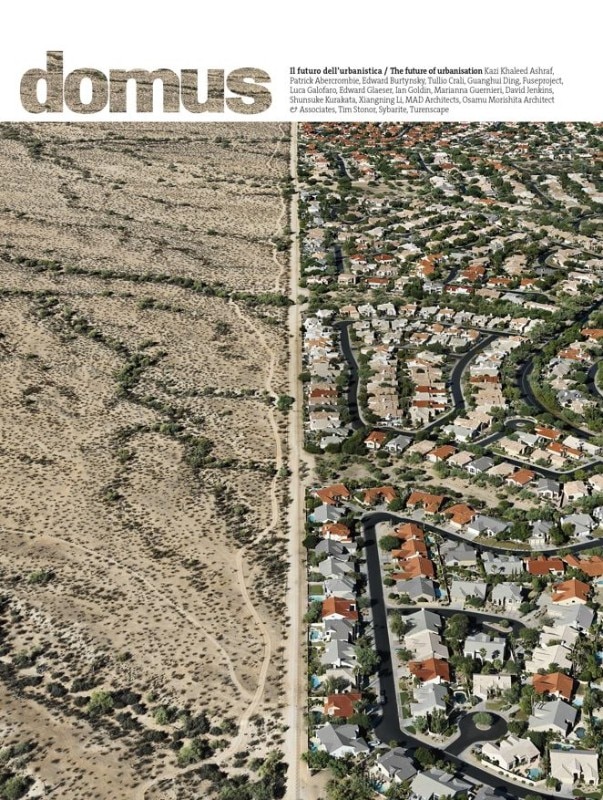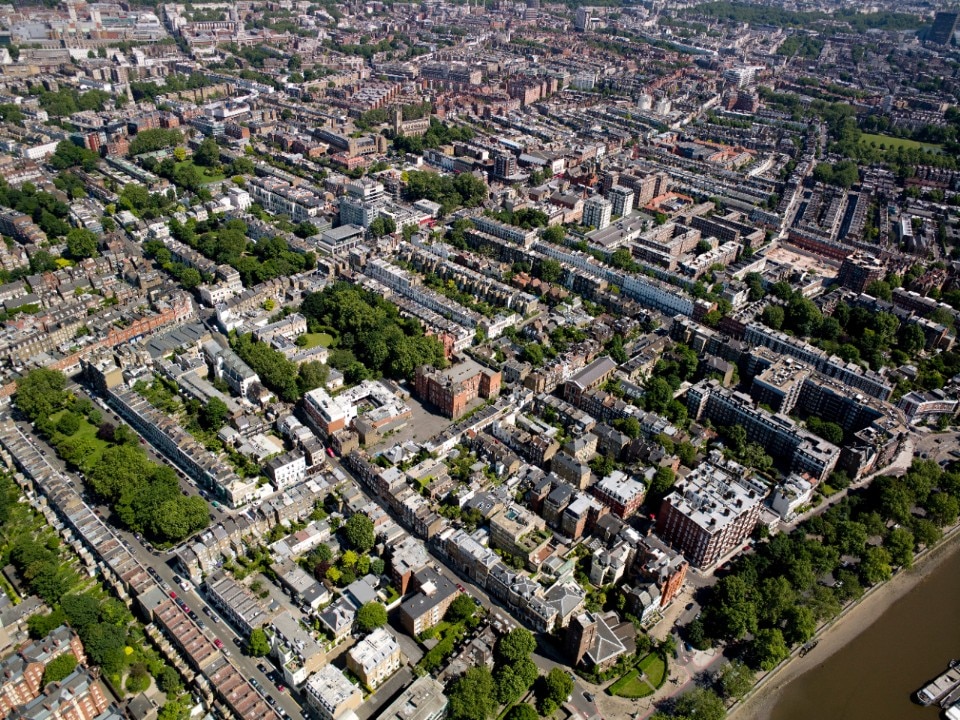Throughout my six decades of professional practice, I have been consistent in my belief that the key to a truly sustainable future is through our cities – both the improvement of existing ones and the creation of new ones. The responsibility for ensuring that not only rests with architects and developers but also with the civic leadership of cities, our mayors, and those who support them. More recently, through my work with the United Nations, I have been delivering that message to a global audience.
Each year, the United Nations convenes mayors from around the world in Geneva at their Forum of Mayors, for which I am their elected Advocate. What follows is my most recent keynote address to that gathering, held on 3 October 2023, which encapsulates my beliefs and how I convey them to those who can change our cities to make them truly sustainable, both now and in the future.
I advocate the compact city firstly because it is statistically less polluting, uses less energy and has a lower carbon footprint. Denser cities are better for the environment.
Cities have been described as our greatest invention. Indeed, they represent the future. They generate 90 per cent of global wealth – along with 70 per cent of greenhouse gas emissions – despite only occupying 1 per cent of the surface of our planet. We have also heard that in less than 30 years, as the global population is anticipated to increase to nearly ten billion, two out of every three people will be living in a city. Accordingly, cities have to grow and change to respond to the realities of population expansion. Most of that growth will occur in Africa, Asia and Latin America.
But even though that development encompasses many kinds of urban environments, the lessons for the future of cities are universal. They transcend boundaries, regions and nationalities. So, what as mayors can you do to steer your cities towards improved quality of life, while at the same time reducing carbon footprints? Although in some respects these two goals appear to be in opposition, I believe they can be brought together. My suggestion is that through the power of zoning, we can promote the “compact city”. By this I mean a city with its historic core (which is usually the city’s birthplace, although it can change dramatically over time) ideally surrounded by a network of well-integrated neighbourhoods that are pedestrian-friendly and supported by good public transport.

These are places where you can walk to work, where you play and shop, and where there are schools for your children. When thinking about zoning, we should also remember that industrial areas – which have traditionally been dirty and out of town – are now often clean and therefore compatible for integration with housing, encouraging proximity to the workplace. I advocate the compact city firstly because it is statistically less polluting, uses less energy and has a lower carbon footprint. Denser cities are better for the environment. In addition, people live longer in those kinds of communities because walking is better for us than driving a car. And that’s not to say I’m anti-car – I’m privately quite passionate about cars – but the reality is that the walkable city is healthier and more sustainable. It is safer, too, because cities with around-the-clock activities are self-policing.
Looking at the many independent surveys, these are the kinds of cities that tourists want to visit because they are attractive. More importantly, they are also where people want to live and bring up their families. So, to encourage the compact city, you have to discourage sprawl. Cities that sprawl consume energy, generate pollution and devour nature. We know about the advocacy for nature in our cities – to bring green in the form of trees, which not only absorb carbon dioxide and reduce the heat island effect of cities, but also make them more human and more beautiful. Cultivating beauty is good for mental health as well.
There is an acute housing problem in many urban areas, which have become unaffordable for those who service the city. Here I’m thinking of nurses, doctors, firefighters and police officers, the people who make the city tick. They should be accommodated within the city and shouldn’t have to commute to the outskirts because of costs. I have visited cities with their civic leaders – as far apart as Singapore and Vienna – where they have outstanding models of affordable rental housing. It doesn’t have to mean dull, boring architecture; it often consists of some of the most beautiful, experimental and pioneering housing – there are excellent examples to learn from. Clean energy is also at the heart of powering our economies and cities. Initiatives such as recycling waste into energy should be in the mix.
Cultivating beauty is good for mental health as well.
The practice of recycling is also relevant to architecture. This is because the most sustainable building is one that can be recycled, rather than demolished and rebuilt. In many cities, obsolete office buildings remain, while more healthy structures are being built with workplaces that encourage up-to-date communication. That leaves a generation of empty office buildings, which in many cities is a factor that builds up debt. Most of these buildings are quite shallow, with a central core and probably low floor-to-ceiling heights, which is why they are unsuitable to accommodate flexible open spaces.
They are not the workplaces of today and the future. But they could be converted into residential buildings. So, imagine that zoning encouraged such a conversion to residential and, in return for that opportunity, a developer would devote a certain amount of that housing to essential workers, which is exactly where they need to be. I think there are exciting possibilities in this model.
What makes a city? One component is its buildings, and the other is its DNA, its appearance, the way it works that transcends the buildings. The infrastructure is the urban glue that binds the individual buildings together. It’s the streets, the boulevards, the parks, the bridges and the public transport that determine the success of a city. Improving that infrastructure is the key to combating climate change. It is also the key to liveability, the spirit of any city, whatever kind of city it is. As opposed to the past, we now have access to data that can aid in the planning of our cities. There is an amazing amount of freely available open-source data on cities. By putting all of that together, you can use digital modelling technology to show the implication of changes without committing to them. For example, the data will tell you which are the preferred places to increase pedestrianisation and plant more trees.
So, the manipulation of that data is not top-down but bottom-up. Those interactive models can be shared in community centres and local neighbourhoods. Cities that don’t have that technology, or cannot afford it, could achieve it through collaboration with their local universities, for example. The Norman Foster Foundation is creating an institute that will have such a laboratory for teaching and bringing forth the civic leaders of tomorrow. Think of the power for good that mayors can develop with such community tools, which can transcend opinions and prejudices with factual data. As a community of mayors, you can pool your knowledge and experience to inform and support the implementation of plans and pilot projects, which might be short-term to begin with, but they are ultimately about long-term sustainable goals. So, I am very excited about the role that you as institutional figures can play, and I wish you every success.
Opening image: Aerial view of Chelsea district, London. Photo © Nigel Young / Foster + Partners










